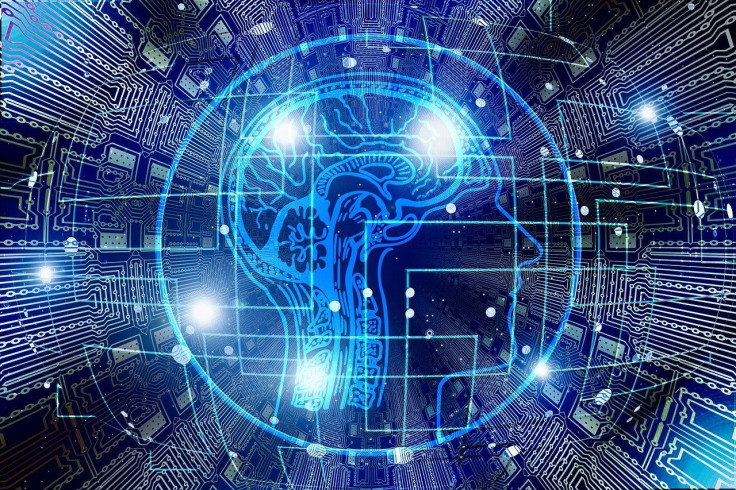AI Alone Can Never Replace Human Ingenuity

When it comes to AI, we must avoid silver bullet thinking. Virtually every business and government agency is clamoring over the shallow pool of AI experts. However, beyond the buzzwords, we must remember that AI itself is not the goal, rather, it is only one part of the toolkit that will help us tackle the challenges of the 21st century.
Alone, neither AI, supercomputing nor human ingenuity alone can solve humanity’s greatest problems. Rather, it is through the intersection of all three can we make true progress.
To understand where we are heading, we must first understand where we have been. The modern pillars of western science and technology were established during the Scientific Revolution during the 17th century. The discipline of knowledge creation that occurred during this period gave birth to the Industrial Revolution and then the Technology Revolution, which permanently altered how we work together, and enabled many millions to escape poverty and enter the middle class.
No one person, technology, or idea defined the revolution; it was when all three came together. The Gutenberg printing press granted thousands of people access to information. New measuring instruments, such as the telescope, the barometer, and the prism allowed scientists and innovators to view the world around them through a fresh lens.
Within this new scientific culture, truly original thinkers were able to form novel ideas that would change the course of history. Take the legendary ‘eureka’ moment that led Newton to conceive of the Universal Gravitational Theory; this discovery was only made possible through the invention of technologies like the telescope, and the scientific and mathematical theories upon which he stood.
Today, we are at a pivotal point in this evolution. The technology revolution over recent decades has unimaginably advanced some, but not all, of the foundational elements of the Scientific Revolution. AI is a formidable weapon to have in our arsenal because it allows us to process more data and information than humanly possible and is finding broad uses such as challenging humans in chess or go, or aiding in the discovery of new mathematical theorems.
Similarly, supercomputers, measured over the past few decades by Moore’s law, have been giving us unimaginable mathematical power to solve ever more complex models of the world around us.
Supercomputers allow us to think beyond pen and paper; we can evolve real or imagined views of our world 100 years into the future, or turn the clock back to the beginning of time. Having worked in the field of supercomputers for decades, I understand just how powerful this tool is.
But we have to remember, these technologies are comparable to the telescope and the prism; they are merely means for further discovery. We cannot, and must not, forget the importance of the human amongst the machines.
Our ability to measure and interpret data is at superhuman levels today with new AI chips and technologies. At the same time, our ability to simulate reality on supercomputers would have our forefathers in disbelief. But there is a growing technology gap between these worlds that needs attention.
Between math, science, and data, we still need human ingenuity - not only to make new discoveries but to guide us on increasingly complex decisions that impact us all. It has been human curiosity, daring, innovation, and indeed accident, that invented new fields of academia and led us to where we are today. But now it will also take the emergence of novel technologies in this gap to assist in the innovation needed for our future. Computers today cannot come up with new ideas, they can merely confirm or invalidate our current ones that are often hard to see without the aid of these technologies. Similarly, answers we need may not lie in the data we have at hand from our world today.
Many of the threats we face today are unprecedented; there is no data set we could feed an AI machine that would help it to predict a total ecosystem collapse because quite simply, it hasn’t happened yet. For that we need visionaries; computers cannot have ‘eureka’ moments by themselves.
There is a gold-rush-style hype surrounding AI today. Governments and private capital firms are pouring billions of dollars into this space hoping that it will be a fix-all solution. However, I believe that we are falling prey to ‘silver bullet’ thinking.
When businesses, universities, and governments aggressively seek out their next AI and supercomputing whizz-kids, they must remember that these tools are only as powerful as the visionaries that use them. Visionaries never emerge out of a vacuum, they are forged in the crevices between technology, mathematics, philosophy, science, and cold-hard observation.
During the Scientific revolution, progress did not come solely from people, the telescope, or mathematics alone. It comes when all three converge in the right place, at the right time. The same applies today; no one technology or individual will transport us to the future. Silver bullets still require a human to take aim, and this will require bridging the world both between and beyond AI and Moore.
About author:

Dimitri Kusnezov is expressing his personal views and not the views of the U.S. Department of Energy (DOE) or the U.S. Government. He has served as the Deputy Under Secretary for Artificial Intelligence and Technology at DOE, Chief Scientist for the National Nuclear Security Administration and as a member of the physics faculty at Yale University.





















